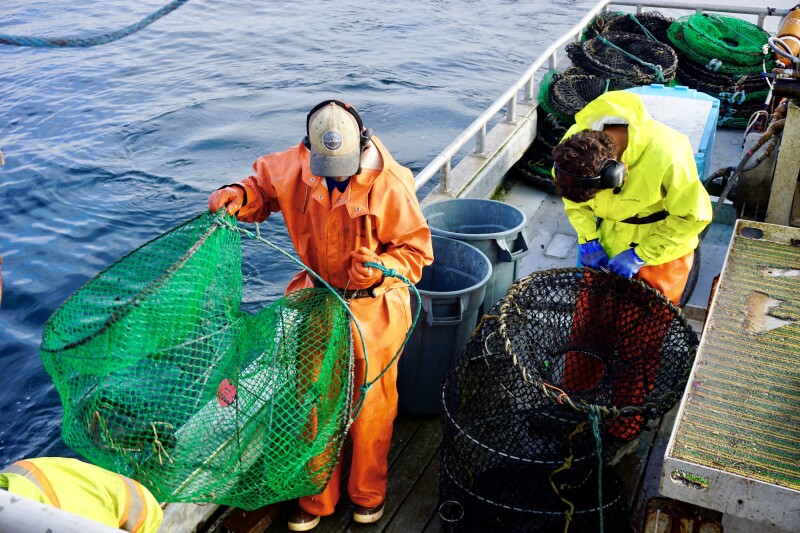Ezekiel Brown started working on a Cordova, Alaska salmon seiner when he was 13 and now owns his own boat, the Lucid Dream, a 58-foot seiner. He fishes salmon in season and, in the spring and summer, sets 150 slinky pots for black cod. “They work great,” Brown says. “More guys are using them for Pacific cod, in areas where they are allowed, because they’re easier to work with. A regular Pacific cod pot weighs 500 pounds, a slinky weighs 12 pounds, and the guys fishing 300 pots can get them all on board.”
Brown also notes that there is less bycatch with slinky pots. “You don’t get many rockfish, and for some reason, the crabs don’t go in them; for black cod, I get anywhere from 10 to 100 pounds per pot, and it’s clean fishing.”
The slinky pots Brown uses are 28 inches in diameter and 30 inches long. “They’re called Cod Coils,” says Brown. “I fish three strings of 50 pots each. We’re still learning how to longline; we need some East Coast lobstermen to come out here and show us!”
Alex Stubs, the inventor of the Cod Coils, known more familiarly as slinky pots, is based in Sitka, Alaska, but has a Gloucester, Mass., phone number. He calls several pots on a line a “trawl” in East Coast parlance. “I was hook and line fishing on a small boat in California,” says Stubs. “I wanted to fish pots, but my boat was too small, so I came up with the slinky, and they worked.”
Stubs started with a 6-mil helix of spring steel covered with polyethylene knotless mesh. “The knotless web is easier on the fish,” says Stubs. “It doesn’t beat them up so much.”
A slinky pot is essentially a spring covered in 1.5-inch mesh, and it can be pressed flat, locked, and easily stacked, providing a simple and safe solution for any boat fishing pots, but especially for small boats. “We build them now anywhere from 27 to 40 inches in diameter and up to 10 feet long,” says Stubs. “Our company name is Fish Tech, and the pots are trademarked as ‘Cod Coils.’ We have them built now in a fishing community in Indonesia; the women sew the web, and the men put the pots together.” For the bigger pots, Stubs notes that they are now using 10-mil spring steel for the coils. “We’re selling more in other countries now. They’re using them in the Southern Ocean for Patagonia toothfish. We’re also building tougher ones with a heavier web so that the whales cannot echo-locate fish in the pots. A pod of orcas out near Dutch Harbor has learned that they can tear up slinky pots and hard pots.”
According to Brown, more fishermen in Alaska want to use slinky pots. As Chairman of the Board of the Cordova District Fishermen United, he is working to get regulations changed to give fishermen the option. “For our Pacific cod fishermen, the quota is split about 70/30 between hooks and pots. In December we’re going to ask that it be just one quota, and fishermen can have the option to use hooks or pots.”







